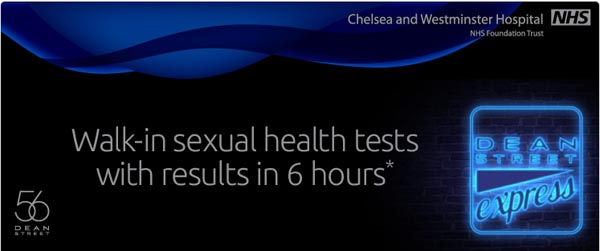 ChemSex and HIV/Hepatitis C virus (HCV) co-infection guide launched to help tackle increasing infections and mortality.
ChemSex and HIV/Hepatitis C virus (HCV) co-infection guide launched to help tackle increasing infections and mortality.
56 DEAN STREET, the sexual health clinic in Soho, London, has launched an informative discussion guide about ChemSex and HIV/HCV co-infection.
Following over 500 conversations with MSM (men who have sex with men), the guide, which is endorsed by The Hepatitis C Trust, aims to educate health-care workers across the UK about the activities, risk factors and terminology associated with ChemSex and to ensure they are armed with the necessary information to have effective conversations and encourage testing and treatment.
MSM are increasingly using recreational drugs during sexual activities, including GBL, GHB, meth and mephedrone, which enhance the experience and are associated with high risk of STIs.
When these men present in clinics, health-care providers often struggle to understand how to communicate appropriately with them, limiting the identification of exposure to risks or an existing infection.
With 92% of the 218 newly-diagnosed HCV infections in the UK in 2011 occurring among MSM who were HIV-positive, the team at 56 Dean Street feels the time has now come to address this public health situation.
 David Stuart, Substance use lead at 56 Dean Street, said: “We are seeing more and more MSM presenting at the clinic following a weekend bender of ChemSex and highly-charged sexual activity. Worryingly, many MSM who are well informed and proactive about their HIV management are often less willing to acknowledge HCV risks and accept tests.
David Stuart, Substance use lead at 56 Dean Street, said: “We are seeing more and more MSM presenting at the clinic following a weekend bender of ChemSex and highly-charged sexual activity. Worryingly, many MSM who are well informed and proactive about their HIV management are often less willing to acknowledge HCV risks and accept tests.
“From our experience, by understanding the cultural and behavioural contexts of MSM and using terminology that they understand, risks can be assessed and we can ensure those needing testing or treatment are seen to.
“We hope the guide will be an invaluable resource for health-care providers across the UK who may not be familiar with how best to communicate with these men, and that open conversations will help tackle this trend.”
The increase in ChemSex and HIV/HCV co-infection is a result of several factors: the availability of recreational drugs, and sexual activities organised online and through apps, often taking place in private homes rather than public sex venues. This makes it hard to reach this group and also difficult to understand exactly what activities are taking place and how to message public health initiatives. As such, sexual health clinics are the new front line in addressing these complex risks and harms, and staff in these clinics need tools to raise awareness and skills beyond their traditional remit.
 Charles Gore, CEO of The Hepatitis C Trust, commented: “We are seeing a worrying increase in hepatitis C infection among men who are aware of the dangers of HIV/HCV co-infection and who are being treated for hepatitis C multiple times but who seem either unaware of the precise risks for contracting hepatitis C or are unable to mitigate those risks successfully. Tools like this guide therefore have a vital role in helping this well-informed and active community, with support from their HCP, identify and halt what can be a deadly combination of diseases.”
Charles Gore, CEO of The Hepatitis C Trust, commented: “We are seeing a worrying increase in hepatitis C infection among men who are aware of the dangers of HIV/HCV co-infection and who are being treated for hepatitis C multiple times but who seem either unaware of the precise risks for contracting hepatitis C or are unable to mitigate those risks successfully. Tools like this guide therefore have a vital role in helping this well-informed and active community, with support from their HCP, identify and halt what can be a deadly combination of diseases.”
The primary goal is prevention of HIV/HCV co-infection, but it is also important for co-infected individuals to be tested and treated.
Successful treatment of HCV in HIV/HCV-co-infected patients is associated with decreased liver-related mortality, as well as non-liver-related mortality and AIDS progression.
Early detection and diagnosis of HCV enables appropriate treatment to be provided for the best chance of the patient clearing the virus.
To download ChemSex and hepatitis C: a discussion guide for HCVs, click here:
















You must be logged in to post a comment.